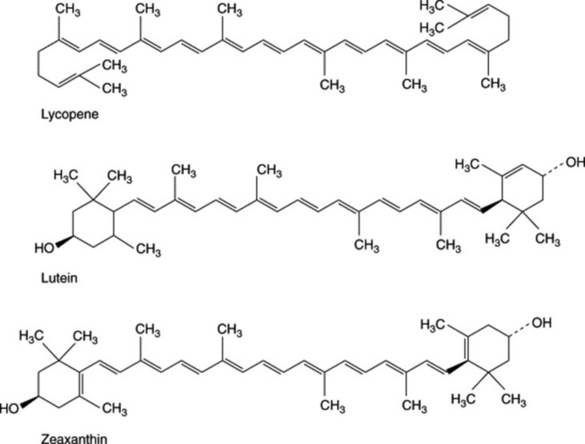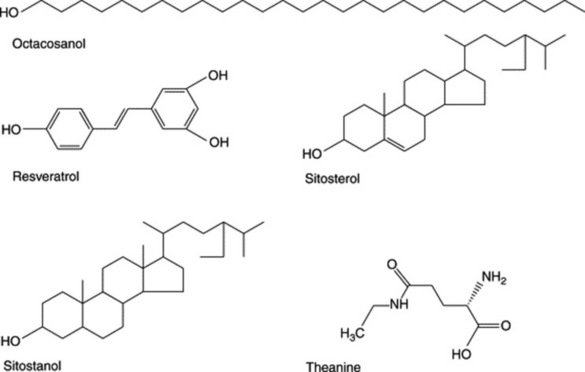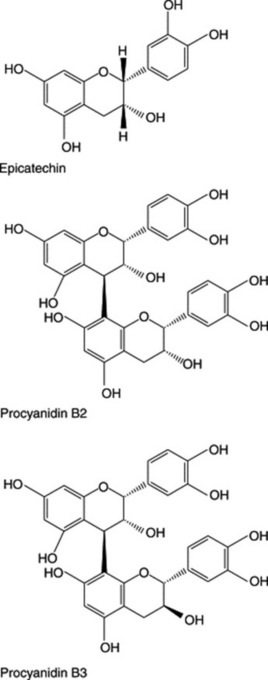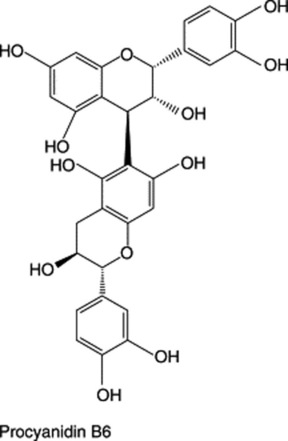Chapter 32 The plant nutraceuticals
A number of plant nutraceuticals are common food constituents, and extracts of many others are used as nutraceuticals.
There are a number of sources of nutraceuticals, including basic human and mammalian metabolites, dietary components of plant and animal origin, synthetic constituents and plant secondary metabolites; increasingly, they are also produced by microbial fermentation. Arguably the greatest number are derived from plants and are used either as single purified components, such as resveratrol, purified multi-component products, such as pycnogenol, or whole plant foods, such as flaxseed. The most researched nutraceuticals of plant origin are those derived from soy and tea, but large numbers of scientific and medical publications relate to the constituents of grapes and wine, and also the many plants rich in polyphenolic components. Table 32.1 lists plant sources and therapeutic activities of a number of commercially available single-component nutraceuticals, which often occur in a number of plants. Various purified multi-component nutraceuticals are also obtained from specific plants (Table 32.2). Those from grape, soy and tea could realistically be obtained from the diet. Increasingly, a number of foods are being promoted as sources of nutraceuticals specifically for consumers who prefer eating a healthy diet instead of taking supplements; Table 32.3 depicts a wide variety of such products. The last group of nutraceuticals occurs in the plant kingdom either widely, such as coenzyme Q10 and S-adenosylmethionine (SAMe), or only in a few specific plants but at insubstantial levels, and are therefore not suitable for realistic incorporation in the diet. These latter nutraceuticals are often produced by chemical or biotechnological synthesis (Table 32.4).
Many of the nutraceuticals owe their activities to antioxidant activity (activity is highlighted in Tables 32.1–32.4), but this may not be the full story. It has been claimed that many also have other activities, including enhancement or inhibition of Phase I and II metabolizing enzymes, and modulation of DNA repair.
Carotenoids
A number of plant-derived carotenoids such as lycopene, lutein and zeaxanthin are currently commercially available as single entities and have wide-ranging activities; their structures are shown in Fig. 32.1. Lycopene is present in red fruits and vegetables, particularly tomatoes, and lutein is present in spinach, peas and watercress. Foods that are yellow—maize, orange juice, honeydew melon and orange pepper—are also good sources of lutein.
The recommended daily intake of lycopene is 35 mg, but a number of Western societies consume from 5–25 mg, with processed products accounting for at least 50% of the total intake, therefore supplementation is often advised. A wide range of lycopene levels has been reported in tomatoes (1–15 mg/100 g), and lutein has been found to occur at 0.08 mg/100 g in tomatoes and 2.38 mg/100 g in butter squash. The mixture of lutein and zeaxanthin stereoisomers have also been reported at levels of 40 mg/100 g in kale and 12 mg/100 g in spinach. Zeaxanthin also co-occurs with lutein at 0.28 mg/100 g in butter squash.
Lycopene
Epidemiological literature has shown that diets rich in tomatoes are associated with lower lung cancer rates. The presence of lycopene in the human lung following lycopene supplementation has been demonstrated, and it is believed that an increased intake of lycopene might provide an additional level of protection against oxidative damage. A high intake of tomato products is associated with a 35% lower risk of total prostate cancer, and a 53% lowered risk of advanced prostate cancer. A decline in protective effect of a range of tomato products have been shown to correspond to a decline in plasma lycopene levels.
Policosanol/octacosanol
Policosanol was developed in Cuba, and the majority of the reseach (over 60 clinical trials) was carried out there. Most studies confirm effective lipid-lowering effects at doses of 10–20 mg/day. Typical improvements include a lowering of low-density lipoprotein-cholesterol (LDL-C) by 18–26%, total cholesterol by 13–17%, and an increase in HDL-C by 15–28%. Comparison of policosanol (10 mg) with lovastatin (20 mg) showed similar effects on lipid levels, but none of the statin side effects were observed with policosanol. Policosanol is also thought to act by inhibition of cholesterol biosynthesis, but direct inhibition of HMG-CoA reductase as seen with the statins is not the mode of action.
Antiplatelet activity also occurs, at 20% of the dose as with aspirin.
Theanine
Long-term social tea drinking appears to have no side effects apart from the effects of the caffeine content, therefore it may be assumed that realistic levels of theanine consumption comparable to those obtained from tea drinking should be safe. The structures of a number of single component nutraceuticals are shown in Fig. 32.2.
GSPE
Grapeseed proanthocyanidin extract (GSPE) constituents are based on either catechin or epicatechin, and monomers, dimers, trimers and other oligomers. The procyanidins are polymers of catechin or epicatechin monomers, composed of 2–12 monomers. Dimeric procyanidins named procyanidin B1 (PCB1), B2, B3 and B4, depending on the configuration of catechin and epicatechin subunits, are present. A number of these catechin derivatives are present as their gallates in addition to the free form. The structures of epicatechin and procyanidin B2 are shown in Fig. 32.3.
Stay updated, free articles. Join our Telegram channel

Full access? Get Clinical Tree










